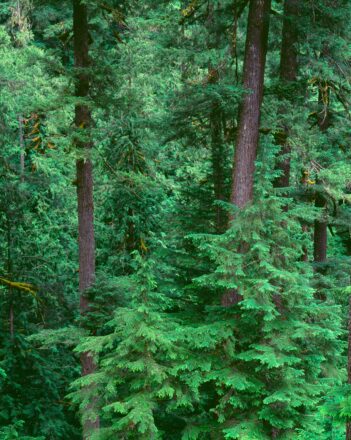Telling Our Story to Bridge the Urban/Rural Divide

Last week’s Woods to Mill highlighted how FRA uses social media to keep members informed about policy, education, technical innovation, and advocacy efforts. However, beyond keeping members informed, social media is also a strategic tool to address one of the forest industry’s biggest challenges: the urban/rural divide—the social, economic, and political disparities between cities and rural areas.[1] By sharing stories about forests, jobs, and innovation, we can connect rural communities with urban centers in ways that benefit everyone.
A few weeks ago, I had the opportunity to talk about the forest industry with the President of Oregon Public Broadcasting during a field tour in Northeast Oregon. This conversation provided a pathway to build a relationship with OPB and showcase the value of managed forests to rural economies and forest health. The tour included private landowners, firefighters, and industry representatives, all describing how they collaborate to reduce fire danger, increase ecological resilience, and help ensure that forests continue to provide essential resources for both communities and the timber industry. Their personal experiences highlighted the industry’s key role in these projects and the expertise it provides to local landowners. Sharing these stories with a wider audience helps urban communities see how active forest management affects their lives.
The forest industry is vital to rural communities, providing family-wage jobs and supporting the management of forests that protect water, wildlife, and other natural resources. But its impact doesn’t stop there—urban communities also benefit from these efforts through carbon-friendly building materials, well-maintained recreational areas, and reduced risks of wildfire and disease. In this way, rural and urban communities are deeply connected: the work done in forests far from the city directly supports the health, safety, and sustainability of urban areas. Highlighting these connections through storytelling and social media helps everyone understand how forestry links communities and landscapes.
Our industry’s story is one of resilience, evolution, and innovation. Sharing this story not only helps recruit new talent and retain skilled workers in rural communities but also highlights the benefits of active forest management for all communities.
To help communicate these messages effectively, a variety of resources are available:
Industry Organizations & Resources:
- Forest Resources Association – Resources for companies, including state carbon reports, the wood supply value chain, policy briefs, technical releases, safety alerts, research, and reports.
- Oregon Forest Resources Institute – Information on the benefits of a working forest, Oregon forest facts and figures, scientific publications, Forest Fact Break videos, and educational resources.
- Washington Forest Protection Association – Forest information for Washington State, including facts, policy updates, and technological advancements.
- Healthy Forests, Healthy Communities – Forest Advocacy Campaigns and videos highlighting active forest management and its benefits to rural communities.
Storytelling & Media Channels:
- Washington Working Forests YouTube Channel – Professional videos explaining the value of forestry.
- We the Forest – Videos showcasing the power of storytelling.
- Vadim Kovalev | Wood World – Digital marketing agency and YouTube channel documenting forests, sawmills, factories, and logging operations.
These resources allow us to showcase the evolving impact of the wood products industry. By sharing these stories online, we can shift perspectives, highlight the connection between rural forest management and urban benefits, and inspire the next generation of talent. As science and technology advance, communicating our work widely is essential—not just to enhance forest health and address climate concerns, but to strengthen the bonds between rural and urban communities that depend on these forests. Telling our story is how we connect people, places, and the future of sustainable forestry.
[1] Fiveable. “Urban-rural divide – AP Human Geography.” Edited by Becky Bahr, Fiveable, 2024, https://library.fiveable.me/key-terms/ap-hug/urban-rural-divide. Accessed 14 Aug. 2025.

